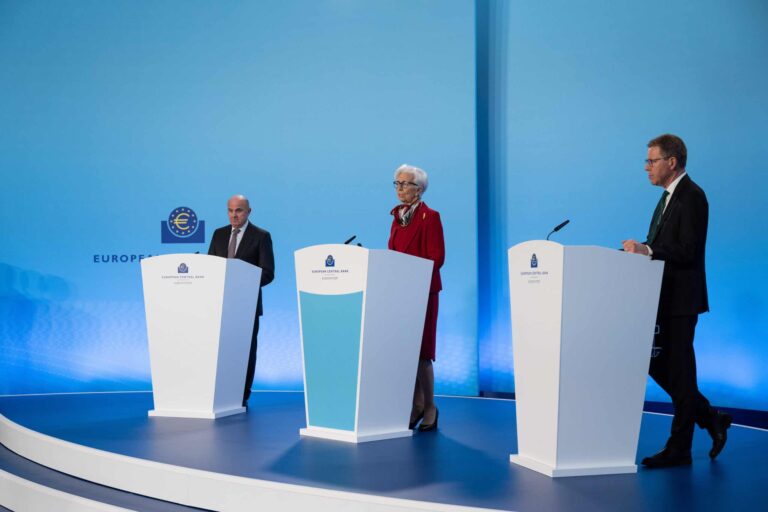The ECB meeting set for Thursday, March 16, ended with the decision to raise interest rates again by 50 points, with this further increase the overall rate rises to 3.5 percent.
The point of no return is getting closer and closer, but at the same time, it is not yet time for the ECB to stop its strategy of containing inflation, which meanwhile continues to rise.
Table of Contents
ECB’s new interest rate
With the new interest rate increase wanted by the ECB, the benchmark rate has risen to 3.5 percent, a high level, although still below the inflation rate indicated for the short term, but, the ECB warns, higher than the medium-term inflation estimates.
In fact, according to estimates, the inflation rate could fall below 3.5 percent between 2024 and 2025, however, for these estimated results to be achieved, it is necessary to stay the course. As Christine Lagarde has often stated, any changes in fact could mark a new unsustainable rise in inflation.
Rising interest rates over the past year have made it possible to slow the rise in inflation, managing to reach a point of equilibrium and finally reversing course.
Inflation actually seems to be decreasing, thanks to various instruments adopted in recent months, from government and European interventions, however, the part related to monetary policy, on which the ECB’s activity is focusing, continues to increase, albeit more slowly precisely thanks to the central bank’s efforts.
Avoidable hike?
Many are against raising interest rates, especially in light of the latest episodes involving the global banking system, with first the failure of Silicon Valley Bank and then the new Credit Suisse crisis.
For the ECB, on the other hand, this latest interest rate increase was necessary and inevitable, and its negative effects, are still sustainable.
The main concern related to the rise in interest rates concerns the lending and financing market, a market that, despite recent increases, has not changed much.
And indeed, in recent months, loans disbursed to businesses have continued to increase, reaching a record figure of more than 5.174 billion euros recorded in November 2022, up from the 4.820 billion recorded in November 2021, a figure similar to that recorded for 2020 and higher than the figure for 2019, which saw loans to businesses in the range of 4.562 billion euros.
These figures show us that rising interest rates, for the time being, are still sustainable.
Upcoming increases
On the next increases, on the other hand, the path is still uncertain, the ECB could continue on the path of increases with a new increase, in the coming months, of 50 points, bringing the general rate to 4 percent, or choose a solution closer to the one adopted by the FED in the U.S. where the last increases were 25 points, thus bringing the general rate to 3.75 percent.
According to many analysts, the FED, which has been pursuing a policy of interest rate restraint for some months now, proceeding with milder increases, may be close to discontinuing this strategy, in other words, the interest rate increase launched in March may be the last increase by the Federal Reserve, but not by the ECB.
The European central bank’s next decisions, as well as the last decision made on March 16, will be based on a number of factors, including inflation levels, the employment rate in Europe, and GDP growth. All of which are currently strongly negative data in Europe and which, according to the ECB president, make it impossible, at least for the time being, to loosen her grip.
Read also: Higher salaries, Europe says “no”: why the ECB and Lagarde oppose it












